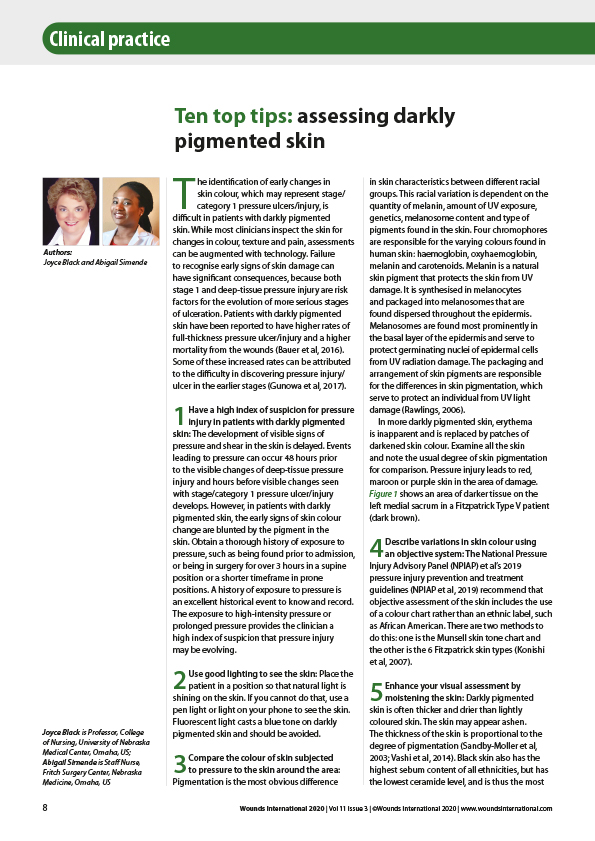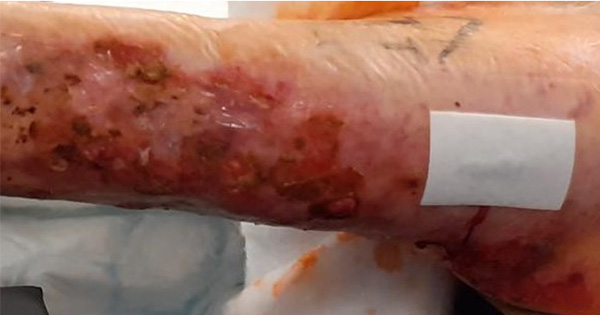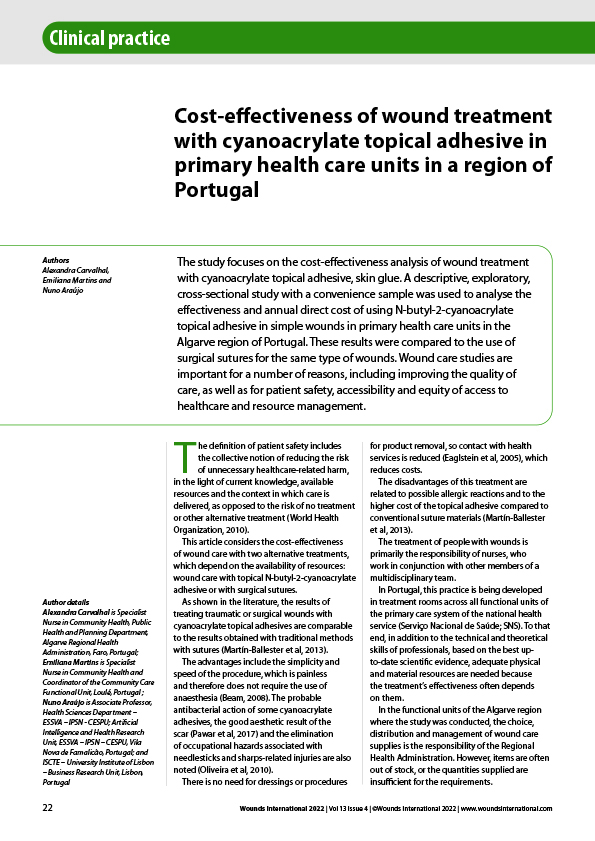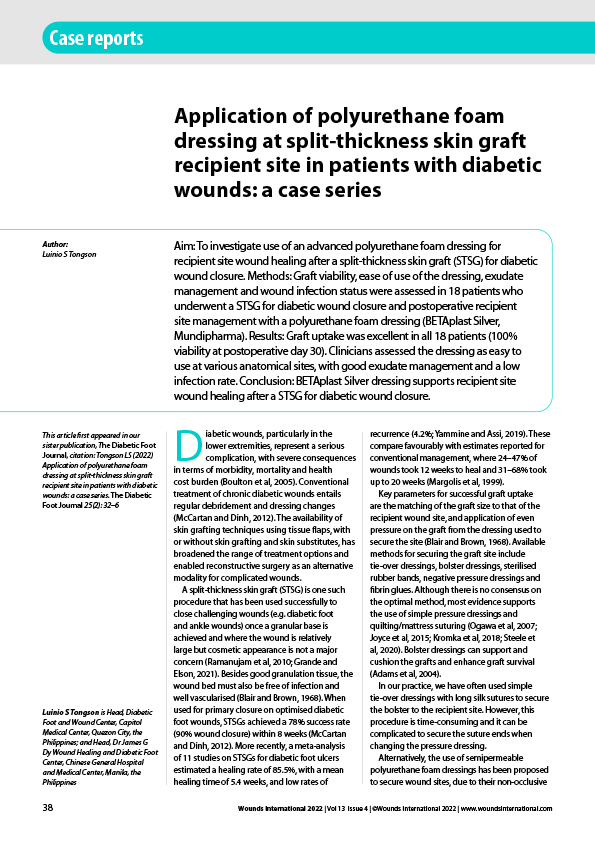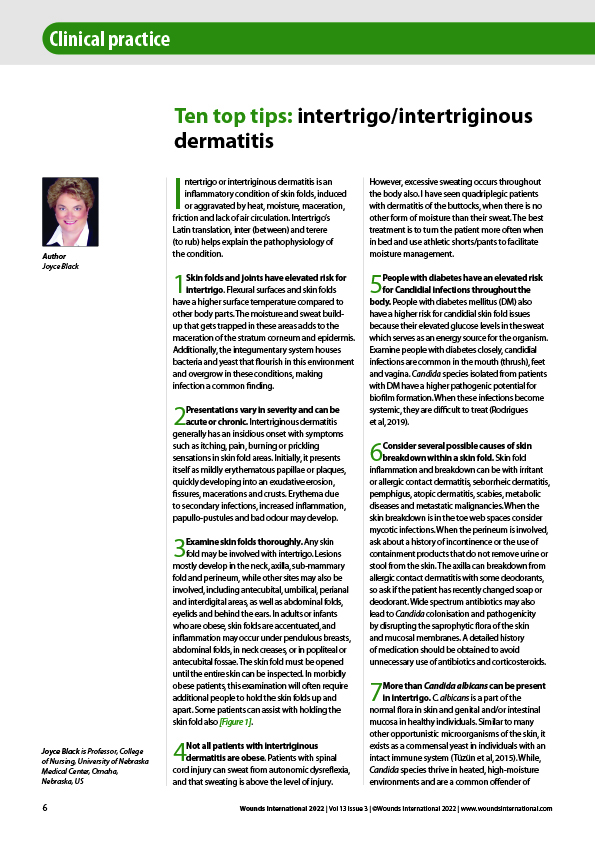The identification of early changes in skin colour, which may represent stage/ category 1 pressure ulcers/injury, is difficult in patients with darkly pigmented skin. While most clinicians inspect the skin for changes in colour, texture and pain, assessments can be augmented with technology. Failure to recognise early signs of skin damage can have significant consequences, because both stage 1 and deep-tissue pressure injury are risk factors for the evolution of more serious stages of ulceration. Patients with darkly pigmented skin have been reported to have higher rates of full-thickness pressure ulcer/injury and a higher mortality from the wounds (Bauer et al, 2016). Some of these increased rates can be attributed to the difficulty in discovering pressure injury/ ulcer in the earlier stages (Gunowa et al, 2017).

